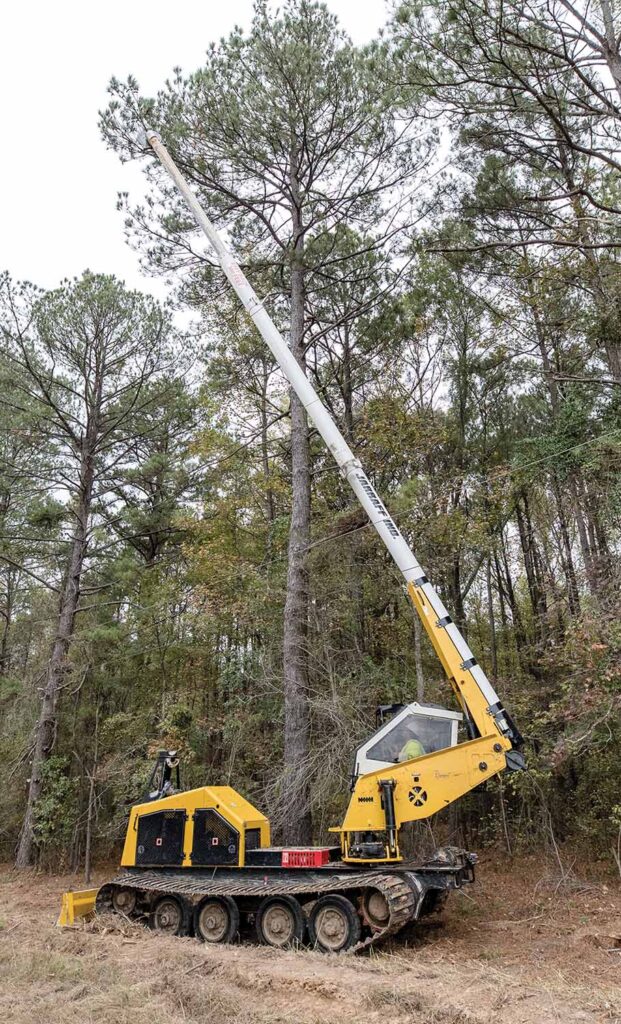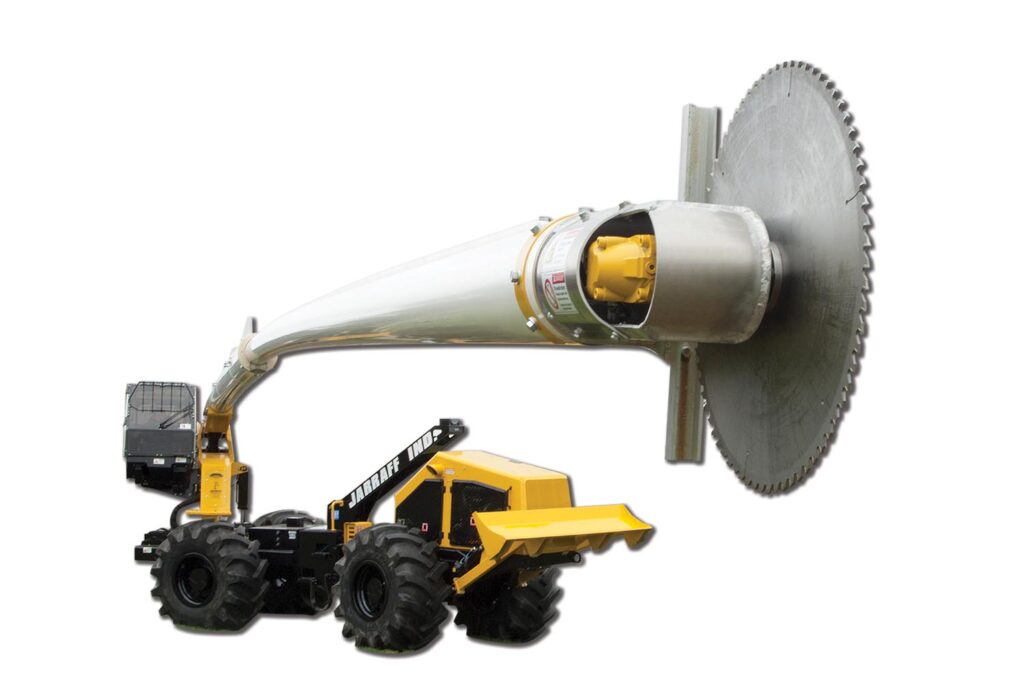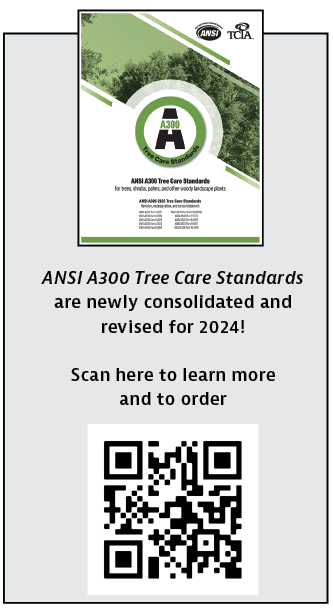ANSI A300, Clause 5, Expands Use of Mechanical Pruning
Revisions to ANSI A300 standards often reflect emerging research or attempts to balance tree health with economics and safety. A good example is root cutting. In a perfect world, we would not cut a living root. But in reality, we recognize that site development inevitably requires cutting tree roots. By defining root-protection zones and processes to otherwise minimize tree injury, A300-2023 Clause 9, Management During Site Development (see callout), provides a reasonable balance between what is ideal for the tree and economic realities.

Similarly, the 2023 revision to Clause 5, Pruning, now allows the use of mechanical pruning outside of those areas defined as “remote/rural.” The standard defines “remote/rural” as “Undeveloped or sparsely populated area including areas of agricultural and forest land, not in direct association with dwellings or development.” Mechanical pruning is defined as “Pruning with heavy equipment (not hand-held) fitted with power saws or other cutting devices (e.g., saws mounted on booms or suspended from a helicopter).” This change is likely to be controversial; indeed, the move generated considerable discussion on the Accredited Standards Committee (ASC) A300.
History
Traditionally, all tree pruning was performed manually, with personnel climbing trees with gaffs, or with ropes and saddles. In private and municipal settings, “shade-tree” and ornamental pruning most often was performed on valuable specimen trees. On the other hand, utilities had to prune trees growing in any location, regardless of the value or type of landscape. Since A300 Pruning was first published in 1995, utilities have advocated for the use of mechanized methods in remote/rural locations, and for good reason. There are thousands of miles of power-line corridors running through forests, where the value or contribution of individual trees is low compared to those on improved sites. (Photo 1) Productivity for mechanized pruning operations is often many times that of climbing or aerial-lift operations.
Cost

For utilities serving rural forested areas, the relative cost of vegetation management is much greater than for those serving higher-density urban areas. Any benefits provided by accessing trees with aerial lifts and climbers must be objectively compared to the cost reductions provided by the use of mechanical methods. For most utilities and state regulators, keeping costs down wins out. Public sentiment reflects this understanding – customer complaints about the use of mechanized equipment are rare in these areas.
In the post-war World War II period, technological advancements transformed the tree care industry. Aerial lifts, chippers and other equipment greatly increased the efficiency of operations. In the 1970s, mechanized pruning equipment was developed for use on utility and rail rights-of-way.

When ANSI A300 standards were developed and first published in 1995, mechanical pruning was an established practice in the utility sector. The new standard spelled out these guidelines for mechanical pruning as such:
“Cuts should be made close to the main stem, outside of the branch bark ridge and branch collar. Precautions should be taken to avoid stripping or tearing of bark or excessive wounding.”
The language remained largely the same through revisions in 2001, 2008 and 2017.
2023 revision change
The 2023 revision no longer restricts mechanical pruning to “remote/rural” locations. The standard now simply states, “Mechanical cuts should avoid stem wounding and be made outside the branch collar and bark ridge.” It further states that “Mastication, the indiscriminate grinding of tree and shrub parts into smaller pieces by heavy equipment, shall not be considered an acceptable branch cutting practice.” This language clearly distinguishes mechanical branch cutting with saws from indiscriminate grinding with flails or rotating cutting heads used by some local highway departments, which by any measure cause “excessive wounding.”
So, after nearly 30 years, why did ASC A300 make this change? There are several reasons.
- Safety: There is no getting around the fact that mechanical methods, where workers remain on the ground, are inherently safer than having workers aloft.
- Advances in equipment: While it is true that mechanical methods cannot match the quality of a skilled worker with a saw, today’s equipment includes cutting heads that swivel and rotate, allowing for greater pruning accuracy. (Photo 2) The more compact machines available today can be used in more locations. Remote-controlled units allow the operator to move about the job site and optimize the placement of the cutting head.
- The necessity to complete the work in a timely manner: Regulations vary, but in every jurisdiction, utilities are required to provide safe and reliable service. The public places a high value on the reliability of their utility services, especially with more people working remotely. In many areas, regulatory requirements and the risk of fire increase the urgency to complete the work.
- A lack of qualified employees: Utilities compete with other sectors within the green industry, as well as with other skilled trades, for able-bodied workers willing to perform these jobs. Limitations on immigration further exacerbate the problem. As the North American workforce ages, competition for workers increases. The opportunity to operate mechanical pruning equipment without leaving the ground broadens the potential candidate base.
Will these reasons satisfy critics? Probably not, and for some legitimate concerns.
Pruning with a saw suspended from a helicopter is, by definition, a form of mechanical branch cutting and is now theoretically allowed anywhere. However, such operations are still only practical in remote/rural locations – it is highly unlikely that utilities will attempt to perform helicopter pruning on Main Street. It also can be argued that lower quality of pruning cuts will cause more injury to trees and result in greater long-term tree risk. Utilities and their contractors might be willing to increase their investment in recruitment and training, but only if it can clearly be demonstrated that the value added was greater than the savings provided by the use of mechanical methods.
Conclusion
Like most other industries, ours is adapting to a variety of challenges. Industry standards are required to be reviewed and revised for good reasons. Technology, economics and scientific research are in constant flux. Revised standards need to reflect real-world conditions.
New tools and methods continue to emerge and need to be evaluated and standardized. For example, advances in LiDAR (light detection and ranging) and other remote sensing technologies are rapidly changing the way utilities and municipalities manage urban-forest resources. It is not difficult to imagine a future where remote-controlled robotic devices do much of the work now done by humans with saws.
Until last year, the A300 standards consisted of 10 “Parts,” each published separately. In 2023, these standards were redesigned, restructured and consolidated into one comprehensive
document, the “ANSI A300 2023 Tree Care Standards.” The former “Parts” are now referred to as “Clauses,” and the numbers have changed.
Whether this trend is good or bad depends on your perspective. Consider: While many of us admire the vehicles of the past, most of us would not want to routinely drive cars without the safety features and other technological advancements of the past 50 years.
However, change is never easy. Concerns should be voiced and due consideration given. ANSI A300 is your industry standard. The next revision is scheduled for publication in 2028, and there will be plenty of opportunity to comment on the process.
Geoff Kempter recently retired from Asplundh Tree Expert LLC, a 48-year TCIA member company headquartered in Willow Grove, Pennsylvania, and is now principal of Arboricultural Consulting Services LLC in Grand Rapids, Michigan. He served as the Asplundh representative on the ASC A300 Committee from 1996 to 2020, and was chair of the 2017 ASC A300 Pruning Revision Subgroup. He was the recipient of TCIA’s 2018 Pat Felix Volunteer of the Year Award, and he is a member of TCI Magazine’s Editorial Advisory Committee.




